What is Banh Xeo?
Bánh xèo is found almost everywhere in the North, Central, and South of Vietnam. However, the bánh xèo in Hội An has many distinct features compared to other regions. It reflects a blend of tradition and creativity in Hội An’s culinary culture.

To create crispy and delicious bánh xèo, it’s essential to follow the right cooking methods for the best results. The main ingredients include rice flour mixed with shrimp and pork belly. The rice needs to be soaked in water before grinding to soften it. The rice batter is prepared with just the right amount of water to achieve a crispy and chewy texture for the pancake. If the batter is too thick, the pancake will be dry and tough; if too thin, it will be soft and fall apart in the pan.
The pork belly used should be tender and flavorful, and the shrimp should be natural, not farmed. These ingredients are marinated with fish sauce, salt, and other spices, then briefly stir-fried until cooked. Making bánh xèo requires constant attention over a hot stove, which is why the rainy season might be the best time for preparing this dish due to the cooler weather.
How to make Banh Xeo?
Once all the ingredients are ready, the pan is heated on the stove. When hot, a bit of chopped shallot is dipped in sesame oil and spread evenly around the pan. Then, a shrimp and a slice of pork belly are placed in the pan. When they are heated through, the rice batter mixture is poured into the pan. As the batter meets the hot oil, it sizzles (“xèo, xèo” sound), which is likely how the dish got its name. Some places also add bean sprouts and cover the pancake to cook until it’s crispy. In some variations, a bit of egg is added to enhance the flavor.
Once the pancake is cooked, it is folded in half in the pan, resembling a half-moon, and then served on a plate. The sight of these crispy, delicious, fragrant pancakes is irresistible.
How to eat Banh Xeo
Alongside bánh xèo, the accompanying ingredients are equally important. The dipping sauce and fresh vegetables play crucial roles. The dipping sauce here is different from that in the North or South, meticulously prepared with fermented bean paste mixed with ground pork liver, crushed peanuts, a bit of rice flour, and spices until it reaches a rich consistency.
Bánh xèo is also served with fresh vegetables, ideally grown in Trà Quế, along with a few slices of bitter banana, starfruit, and thin-cut cucumber to enhance the dish’s flavor.
The way people enjoy this dish is also quite special. The people of Hội An often eat bánh xèo during the rainy season because it’s a dish that takes time to prepare and is fried, so it’s best enjoyed on cool days. Bánh xèo should be eaten hot to preserve its crispy texture. People eat it directly with their hands instead of using chopsticks or spoons. Eating with hands is a distinctive sign, similar to eating sticky rice or chicken — all these are traditionally eaten with hands.
To enjoy bánh xèo, it’s common to place a piece of the pancake on a thin layer of rice paper, add some fresh vegetables, cucumber, starfruit, and roll it up neatly. This creates beautiful and tasty rolls of bánh xèo. Dip these rolls into the prepared dipping sauce, and you’ll experience an unforgettable taste.
One could say that Hội An cuisine is diverse, evolving through each stage to suit the local taste, and bánh xèo is one of those dishes that has developed its own unique character. Anyone visiting Hội An during the cold season should not miss the opportunity to savor the hot and delicious bánh xèo.
Banh Xeo for Vegetarian

Vegetarian Bánh Xèo is a delightful variation of the classic Vietnamese pancake, traditionally made with a filling of tofu, mushrooms, carrots, onions, and a blend of rice flour and eggs. This meat-free rendition preserves the signature crispiness and savory essence of the original dish while catering to vegetarians who seek flavorful and wholesome alternatives. With its vibrant colors and rich textures, Vegetarian Bánh Xèo exemplifies the creativity and adaptability of Vietnamese cuisine, offering a delicious option that satisfies both taste and dietary preferences.
For vegetarian Banh Xeo, the dipping sauce is sesame sauce or soya sauce instead of fish sauce. Those sauce is not only meat- free but also full of umami flavors.
Vegan Banh Xeo
Together with vegetarian Banh Xeo, Hoi An also got a version of Vegan Banh Xeo. Vegan Bánh Xèo presents a delightful adaptation of the traditional Vietnamese pancake, featuring a filling of tofu, mushrooms, carrots, and onions wrapped in a crispy rice flour shell—all without the inclusion of egg. This plant-based version retains the authentic flavors and textures of the original dish while catering specifically to those following a vegan diet. Bursting with fresh ingredients and vibrant colors, Vegan Bánh Xèo exemplifies the versatility and innovation of Vietnamese cuisine, offering a delicious and wholesome option that celebrates both sustainability and flavor.
Our introduction video about vegetarian Banh Xeo and how to eat it






































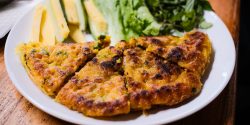
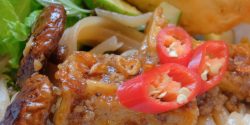

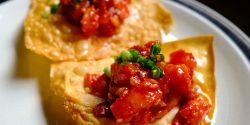















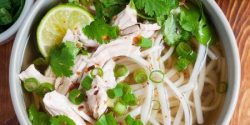

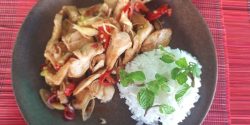



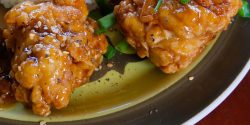

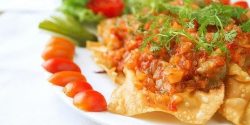
Leave a Reply